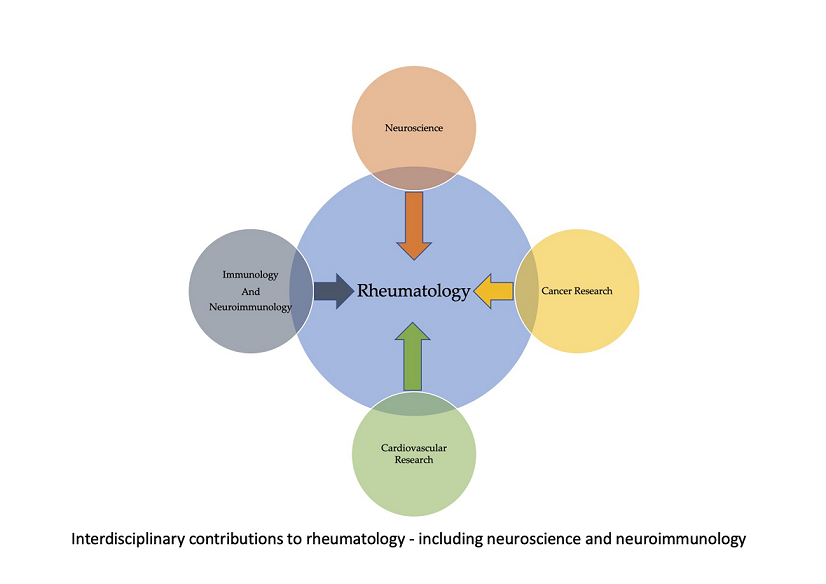Neuroscience is a vast discipline that deals with the anatomy, biochemistry, molecular biology, physiology and pathophysiology of central and peripheral nerves. Advances made through basic, translational, and clinical research in the field of neuroscience have great potential for long-lasting and beneficial impacts on human health. The emerging field of biological therapy is intersecting with the disciplines of neuroscience and rheumatology, creating new horizons for interdisciplinary and applied research. Biological drugs, growth factors, neuropeptides and monoclonal antibodies are being developed and tested for the treatment of painful arthritic and rheumatic diseases. This concise communication focuses on the solutions provided by the fields of neuroscience and neuroimmunology for real-world clinical problems in the field of rheumatology, focusing on synovial joint pain and the emerging biological treatments that specifically target pathways implicated in osteoarthritis pain in peripheral nerves.

